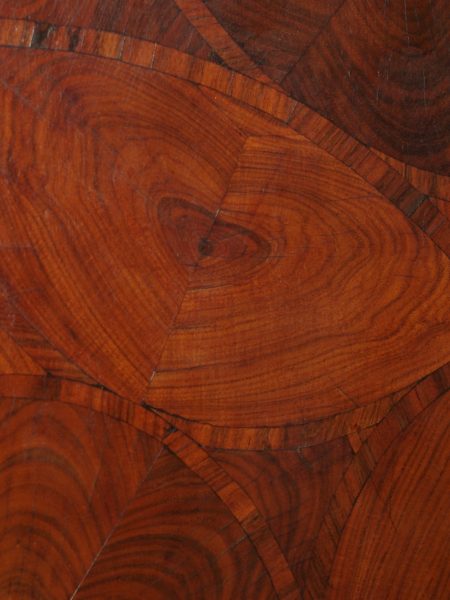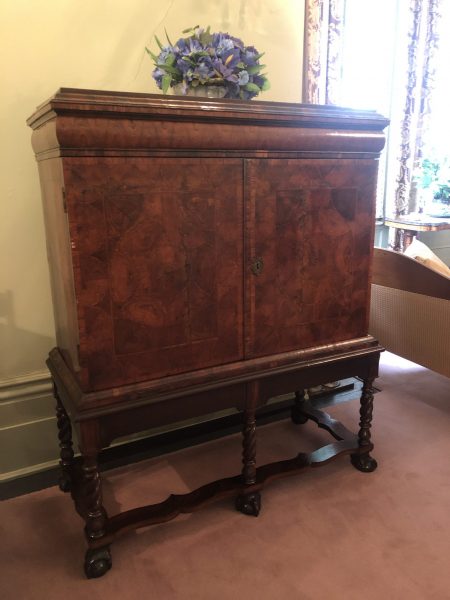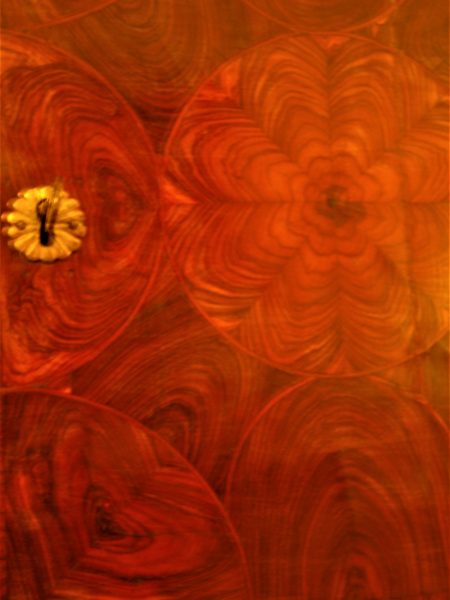William and Mary Cabinet with ‘Oyster’ Veneer Figures



Two details of William and Mary Cabinet, showing ‘oyster’ veneer figures. Photos by S. Butlin.
William and Mary Cabinet with ‘Oyster’ Veneer Figures,
Artist: Unknown
Date: c. 1713
Created: England
Medium: hardwood, possibly walnut.
Dimensions: one oyster veneer figure 8 x 14 cm. (variable)
This William and Mary cabinet came to Eldon House as part of the inheritance of Lucy Ronalds who married George Harris in 1867. Lucy was the sole heir of her paternal grandmother and this cabinet along with many pieces of furniture and other items were sent from England to Eldon House in large packing cases.
The cabinet is decorated with ‘oyster’ veneer ‘figures,’ so called because its shape resembles the shell of an oyster. A veneer is a thin sheet of wood cut from various parts of a tree and when glued in a pattern to the carcase or underwood of a piece of furniture creates a decorative ‘figure’. The oyster figure is made from slices, usually cut transversely, from a small sapling or branch. [21] In this cabinet the oyster figures are seen as a series of light and dark irregular concentric rings arranged in distinctive patterns. Similar ring patterning can be seen in nature, in shells, water ripples, and tree rings.